Ranked among the top ten most visited European countries, Portugal opens its doors and shores to over 26 million tourists annually, offering each visitor unique experiences thanks to its stunning landscapes, breathtaking beaches, and delicious local cuisine with a Mediterranean twist.
From the dramatic cliffs of the Algarve and the Camino Portuguese for avid hikers to the crystal-clear beaches along the Azores coast for surfers and the medieval Pena castles for history enthusiasts, this Western European country has so many highlights that we couldn’t list them all if we tried.
However, we’ve curated a list of 30 activities you can try while exploring this European gem. You can see what there is to do in:
Why visit Portugal?

Visitors can freely explore urban areas like Lisbon and Porto or venture into coastal and rural regions without major security concerns.
The friendly locals and welcoming vibe further contribute to a stress-free life, as many of Portugal’s Golden Visa will attest.
Getting around Portugal is straightforward, thanks to its well-connected and affordable public transport system. Trains link key cities like Lisbon, Porto, and Faro efficiently, while metro systems in Lisbon and Porto are easy to navigate.
Buses and trams cover local transport needs, including iconic routes through Lisbon’s historic districts. Even smaller towns are accessible, allowing tourists to enjoy both well-known spots and hidden gems. Even retirees on Portugal’s D7 Visa find it easy to get around.
Beyond its landscapes, Portugal’s warm hospitality and affordability make it accessible for travelers of all budgets. Visitors can enjoy a glass of world-famous port wine or wander through ancient vineyards in the Douro Valley. Adventure seekers can explore the volcanic islands of the Azores or hike through lush forests in Sintra.
Combined with its rich history, scenic landscapes, and famous cuisine, Portugal provides a balanced, worry–free travel experience.
Lisbon and Silver Coast
1. Visit Sintra: A fairy tale destination

Pena Palace: Sitting atop a hill, Pena Palace dazzles with its romantic architecture and vibrant colors. As a UNESCO World Heritage Site, its mix of Gothic, Moorish, and Manueline styles and its opulent interiors and panoramic views make it a historical and architectural gem.
Quinta da Regaleira: Another UNESCO World Heritage Site, Quinta da Regaleira is a mystical estate with labyrinthine tunnels, grottoes, and symbolic architecture. Its Initiation Well and lush gardens create a fantastical experience steeped in history and legend.
2. Explore the Jerónimos Monastery
The Jerónimos Monastery in Lisbon’s Belém district is a stunning example of Manueline architecture and a UNESCO World Heritage Site. The monastery features a richly decorated façade and grand cloisters with intricate stonework.
You’ll find the tombs of notable figures like Vasco da Gama and Luís de Camões. Its impressive architecture and historical significance make it a must-visit for anyone interested in Portugal’s rich history.
3. Belém Tower: Guardian of the Gateway

Built in the early 16th century to guard the entrance to the city’s harbor, the tower is a prime example of Manueline architecture with its elaborate stone carvings and defensive design.
Its strategic location and detailed design make it a must-visit attraction. Climb to the top to enjoy sweeping views of the Douro River and Lisbon.
The Belém Tower’s rich history and scenic backdrop make it a key stop on any Lisbon tour.
4. Watch aquatic wildlife at The Lisbon Aquarium

Designed by architect Peter Chermayeff, the aquarium features a massive central tank filled with diverse marine creatures, including sharks, rays, and colorful fish.
The Oceanário’s design includes an underwater viewing tunnel that offers a 360-degree perspective of the aquatic world.
This educational experience emphasizes marine conservation and is ideal for families and enthusiasts. The vibrant marine life and focus on conservation underscore the importance of preserving our oceans.
5. Walk through Alfama
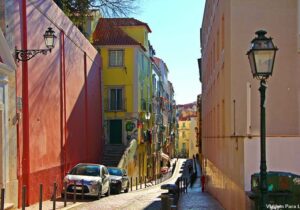
Stroll through Alfama’s cobbled streets to find traditional Portuguese houses, local shops, and charming cafes. The district features iconic landmarks such as São Jorge Castle, which provides breathtaking views of the city.
Alfama’s traditional Fado music performances enhance the authentic Portuguese experience, making it a must-visit for anyone interested in Portuguese culture and history.
6. Experience Lisbon’s Nightlife and Fado Music
Lisbon’s nightlife is as dynamic as its daytime attractions, featuring a range of bars, clubs, and live music venues. The Bairro Alto and Cais do Sodré districts are especially known for their lively atmosphere and diverse entertainment options.
Fado music, a traditional Portuguese genre famous for its soulful melodies, is a key part of Lisbon’s cultural scene. Enjoy a live Fado performance in one of the city’s traditional Fado hubs for an authentic and moving musical experience.
7. Visit the National Museum of Azulejo
The Museu Nacional do Azulejo in Lisbon focuses on azulejos, the iconic Portuguese ceramic tiles with intricate designs and vibrant colors. The museum’s collection covers centuries of craftsmanship and evolution behind these beautiful tiles.
Explore exhibits that highlight the historical and artistic significance of azulejos and appreciate their role in Portuguese architecture and culture. The museum offers a fascinating glimpse into an important aspect of Portugal’s artistic heritage.
8. Enjoy a Tram Ride in Lisbon’s Historic Districts

Tram 28 is especially popular, taking passengers on a scenic route through picturesque neighborhoods like Alfama, Baixa, and Graça.
Riding the tram gives a unique view of Lisbon’s landmarks and vibrant street life.
It’s a delightful way to experience the city’s historic charm while enjoying a nostalgic journey through its narrow streets and hills.
9. Sintra’s Castle of the Moors
The Castle of the Moors, near Sintra, is an ancient fortress that blends historical intrigue with stunning views. Built by the Moors in the 8th century, the castle offers a glimpse into Portugal’s medieval past.
Explore the castle’s crumbling walls and towers, which provide panoramic views of the Sintra mountains and the Atlantic Ocean. The castle’s strategic position and historical significance make it a fascinating destination for history buffs and nature lovers.
10. Stroll through Óbidos’ medieval town

As you explore Óbidos, you’ll encounter historic sites like Óbidos Castle and the Church of Santa Maria. The town is also famous for its local specialty, ginjinha, a cherry liqueur served in chocolate cups.
Óbidos offers a wonderful mix of history, culture, and delicious cuisine, making it a must-visit for those interested in medieval towns and historical exploration.
11. Thermal Springs of Caldas da Rainha

Founded in the late 15th century, the town’s healing springs have long attracted visitors seeking relaxation and rejuvenation.
Today, you can visit modern spa facilities or explore the historic thermal baths to glimpse the town’s past.
In addition to wellness, Caldas da Rainha features beautiful gardens, like Parque D. Carlos I, and a lively local market reflecting Portuguese culture and cuisine.
Visiting Caldas da Rainha offers a perfect mix of relaxation, history, and local charm, enriching your Portuguese adventure.
12. The Royal Palace of Mafra

The palace boasts a vast library filled with thousands of books, a grand basilica, and beautifully decorated rooms.
Its opulence and historical significance make it a must-visit for those interested in Portuguese royalty and architectural grandeur.
13. Cabo da Roca: The Edge of Europe
Cabo da Roca is the westernmost point of mainland Europe, known for its dramatic cliffs and breathtaking views of the Atlantic Ocean. The rugged terrain and steep drop-offs create a stunning landscape where the land meets the sea.
Visiting Cabo da Roca provides a profound sense of the Atlantic Ocean’s vastness and Europe’s edge. It’s a perfect spot for reflection, photography, and enjoying the raw beauty of Portugal’s coastline.
14. Marvel at the Nazaré Waves

Even if you’re not surfing, watching these enormous waves crashing against the shore is a breathtaking sight.
The town’s surf culture and the immense power of the Atlantic waves make Nazaré an exciting destination for adventure seekers and spectators.
The giant waves provide a dramatic and exhilarating experience for visitors to the coast.
Central and Southern Portugal
15. View the Gothic Monastery at Batalha

Key highlights include the Capelas Imperfeitas (Unfinished Chapels) and the intricately detailed cloisters. Its Gothic style and historical relevance make it a must-visit for those fascinated by Portugal’s rich history and architectural wonders.
16. Visit a Templar Treasure in Tomar

Founded by the Knights Templar in the 12th century, this complex features a mix of Gothic, Manueline, and Renaissance architecture. You’ll find beautiful cloisters, the grand church, and the iconic round Templar church as you explore.
The site is rich in stories, allowing you to immerse yourself in Portugal’s past. Plus, the stunning views from the convent make it an unforgettable stop on your journey through the country.
17. Évora: A Historical Gem in the Alentejo

Strolling through Évora’s narrow streets, visitors will encounter charming squares, traditional whitewashed houses, and historical monuments that provide a window into Portugal’s past.
Évora’s blend of history, culture, and architecture makes it an essential destination for those seeking to delve deeper into Portugal’s heritage.
18. Explore the Beaches of the Algarve
The Algarve region is renowned for its beautiful beaches with golden sands and clear blue waters. Popular spots like Praia da Rocha and Praia de Marinha are perfect for sunbathing, swimming, and water sports.
The Algarve coastline also features dramatic cliffs, hidden coves, and charming fishing villages. Whether you’re looking for relaxation or adventure, the Algarve beaches offer a perfect coastal retreat with stunning scenery and a relaxed atmosphere.
19. Sea Caves of Benagil
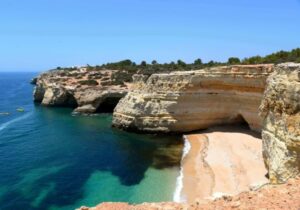
The Benagil Sea Cave is notable for its dome shape and a circular opening in the ceiling that lets sunlight illuminate the golden sands inside.
Exploring the cave is a breathtaking experience, with crystal-clear waters and intricate rock formations creating a surreal setting. The Algarve’s dramatic cliffs and beautiful sea caves are unforgettable natural attractions.
20. Discover the Shrine of Fátima

The shrine includes the Basilica of Our Lady of the Rosary, the Chapel of the Apparitions, and several chapels dedicated to the Virgin Mary.
The serene and spiritual environment offers a deep experience for those seeking reflection and connection.
The shrine’s rich history and significance make it a powerful destination for pilgrims and visitors.
21. Tour the University of Coimbra
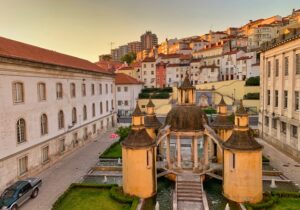
Noteworthy features include the Joanina Library, an 18th-century Baroque masterpiece, and the Royal Palace of Alcáçovas, offering panoramic views.
The university’s storied past and stunning buildings make it a captivating destination for those interested in history and education.
Porto and Northern Portugal
22. Explore Guimarães: The Birthplace of Portugal

The city played a key role in Portugal’s early history and is fascinating to explore.79}”>
Visit the Guimarães Castle, a medieval fortress offering insights into the city’s past, and wander through the historic center to enjoy its charming streets and buildings.
Guimarães blends historical charm with vibrant local culture, making it a must-see destination.
23. Peneda-Gerês National Park: Portugal’s Natural Wonderland
Peneda-Gerês National Park, Portugal’s only national park, features diverse landscapes from dense forests to rugged mountains. It’s a paradise for outdoor enthusiasts and nature lovers.
Explore hiking trails through scenic valleys, past waterfalls, and traditional villages. The park’s rich biodiversity and natural beauty offer excellent opportunities for wildlife watching, hiking, and discovering Portugal’s rural charm.
24. Explore the Ribeira

Explore colorful buildings, narrow streets, and bustling squares. Dine at riverside restaurants to enjoy local dishes while watching the Douro River.
Ribeira’s lively atmosphere and historic architecture offer a great opportunity to experience Porto’s unique character and beautiful river views.
25. Tour Porto’s Wine Cellars
Porto is famous for its Port wine, and exploring the city’s wine cellars is a must for wine lovers. Situated along the Douro River, these cellars offer guided tours and tastings of the region’s renowned fortified wine.
Discover the winemaking process, from fermentation to aging, and sample various Port wines, including vintage and tawny. Porto’s wine industry’s rich traditions and history make this a delightful and educational experience.
26. Lello Bookstore

Many believe J.K. Rowling drew inspiration for her Harry Potter series here, making it a favorite for fans. The store is packed with books in both Portuguese and English, offering something for every reader.
Spending time in Lello feels like stepping into a storybook, with the magical atmosphere and visitors wandering through its shelves. Whether you’re picking up a new read or simply admiring the architecture, Lello Bookstore is a delightful experience.
27. Cruise the Douro Valley
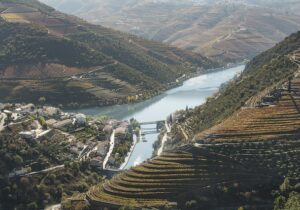
As you float along the river, enjoy views of rolling hills covered with grapevines and picturesque wine estates.
Many cruises offer wine tastings, letting you sample the region’s famous wines, including Port and Douro.
The valley’s serene beauty and wine culture create a memorable and relaxing experience for wine lovers and nature enthusiasts.
28. Serra da Estrela: Portugal’s Highest Peaks

Winter is a popular spot for skiing and snowboarding, while summer attracts hikers and nature enthusiasts.
The range is known for its picturesque villages, rugged peaks, and stunning landscapes. Whether skiing, hiking or simply enjoying the views, Serra da Estrela offers a memorable experience for outdoor adventurers.
Island Adventures
29. Take in the Magic of the Azores
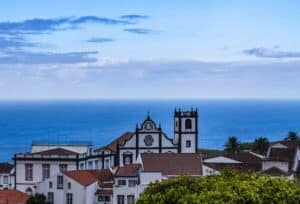
With hiking trails through volcanic landscapes and relaxing thermal springs, the Azores offer diverse experiences.
The islands’ untouched beauty and rich natural resources make them ideal for adventure and relaxation.
30. Experience the allure of Madeira
Madeira, known as the “Island of Eternal Spring,” is famous for its mild climate and lush scenery. Its volcanic origin has created dramatic landscapes, including cliffs, green forests, and stunning coastal views.
Visitors can explore Madeira’s levadas (irrigation channels) that wind through the mountains, hike its rugged terrain, and enjoy the vibrant flora. Madeira’s natural beauty and pleasant weather make it a great scenic and relaxing getaway spot.
How to Visit Portugal
If you’re planning to visit Portugal, it’s important to understand the tourist visa requirements based on your nationality.
EU citizens: EU citizens do not need a visa to enter Portugal for tourism. They can stay up to 90 days within 180 days using a valid passport or national ID card. It’s important to ensure that your document is valid for the entire duration of your stay.
Third–country citizens with Visa Waivers: Citizens from countries with visa waivers can enter Portugal without a visa for tourism. This includes travelers from the United States, Canada, Australia, and Japan, who can stay up to 90 days within 180 days.
Tourist visa for other nationalities: A tourist visa is required for citizens of countries that do not have a visa waiver agreement with Portugal. To apply for a tourist visa at your home country’s nearest Portuguese consulate or embassy, you must have a valid passport, travel for tourism purposes, and have sufficient funds to support your stay in Portugal.

Frequently Asked Questions About the Top Things to do in Portugal
What are the must-visit cities in Portugal?
Portugal has several must-visit cities, including Lisbon, Porto, and Coimbra. Each offers a unique blend of history, culture, and charm, with iconic landmarks, vibrant neighborhoods, and delicious cuisine.
What are the best things to see and do in Portugal?
Top things to see in Portugal include the historic streets of Lisbon, the stunning palaces of Sintra, and the beautiful beaches of the Algarve. Wine tasting in the Douro Valley and scenic boat rides on the Douro River are also must-dos.
Don’t miss iconic landmarks like the Belém Tower and Jerónimos Monastery. Each region offers a unique blend of culture, history, and natural beauty.
What are the top attractions in Portugal for history lovers?
Portugal has a rich history, and the top attractions in Portugal for history enthusiasts include the Jerónimos Monastery in Lisbon, the Sé Cathedral in Porto, and the ancient Roman ruins of Conímbriga.
Where can I find the best beaches in Portugal?
Portugal is renowned for its beautiful beaches, with top destinations including Praia da Marinha in the Algarve, Praia da Rocha in Portimão, and Praia de Carcavelos near Lisbon. Visitors can enjoy sunbathing, swimming, and water sports in these picturesque coastal paradises.
Are there any adventurous activities in Portugal?
Yes, Portugal has plenty of adventurous activities. You can surf the impressive waves at Nazaré or the Algarve coast. Hiking trails in the Azores and the Rota Vicentina provide stunning scenery, while rock climbing in Arrábida Natural Park is popular. Kayaking along the coastline is another great way to explore.
What are the most unique things to see in Portugal?
Unique attractions in Portugal include the rock formations of the Algarve and the colorful streets of Porto’s Ribeira district. Cabo da Roca, the westernmost point of mainland Europe, offers breathtaking views.
The Chapel of Bones in Évora is a striking reminder of history. Each site showcases Portugal’s rich heritage and diverse landscapes.
What's the best food to try in Portugal?
Portugal’s iconic dishes include bacalhau (salted codfish), pastéis de nata (custard tarts), and grilled sardines. You can find these delicacies in many places in Portugal, from traditional Tascas (restaurants) to bustling food halls.
What are the most fun things to do in Portugal with kids?
Portugal offers many family-friendly activities. In Lisbon, visit the Oceanário for a fun and educational experience. The Algarve region has fantastic beaches and water parks perfect for children. In Porto, the Livraria Lello’s magical bookshop can captivate young imaginations.
What is the best time to visit Portugal?
The best times to visit Portugal are during the spring (April to June) and fall (September to October), when the weather is pleasant, and the crowds are smaller. Summer (July and August) is also popular, particularly for beach destinations, but it can be quite hot and busy.
Do I need a visa to visit Portugal?
Portugal is part of the Schengen Area, so citizens of EU/EEA countries do not need a visa. For other nationalities, a short-term tourist visa may be required. Check with your local Portuguese consulate for specific visa requirements based on your nationality.
For more information of Portugal visas, read our guide: Visa Requirements for Portugal 2025: Guidelines, Application Process, and More
What is the local currency in Portugal?
The currency in Portugal is the Euro (€). While credit and debit cards are widely accepted, it’s a good idea to carry some cash, especially when visiting smaller towns or local markets.
Is Portugal a safe destination for tourists?
Yes, Portugal is considered very safe for tourists. The crime rate is low, and the locals are known for their friendliness. As always, it’s wise to stay aware of your surroundings and take standard precautions.
What should I pack for a trip to Portugal?
Pack according to the season and your planned activities. Summer requires lightweight clothing, sunscreen, and swimwear, while cooler months call for layers and a light jacket. Comfortable walking shoes are essential for exploring cities and natural sites.



